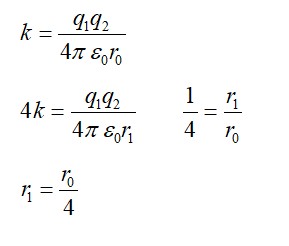The gravitational force between a H atom and a another particle of mass m will be given newton’s law
F=GMm/r2 where r in km
(a) M=mproton+melectron
(b) M=mproton+melectron-
(c) M is not relate to the mass of the hydrogen atom
(d) M=mproton+melectron-(|V|)= magnitude of the potential energy of electron in H atom.
The gravitational force between a H atom and a another particle of mass m will be given newton’s law
F=GMm/r2 where r in km
(a) M=mproton+melectron
(b) M=mproton+melectron-
(c) M is not relate to the mass of the hydrogen atom
(d) M=mproton+melectron-(|V|)= magnitude of the potential energy of electron in H atom.
-
1 Answer
-
This is a Multiple Choice Questions as classified in NCERT Exemplar
Answer- b
Explanation- F=GMm/r2
M=effective mass of hydrogen atom=mass of electron +mass of proton -B2/c
B.E of hydrogen atom = 13.6eV
Similar Questions for you
Q = [4 *4.0026 – 15.9994] *931.5 MeV
Q = 10.2 MeV
Taking an Exam? Selecting a College?
Get authentic answers from experts, students and alumni that you won't find anywhere else
Sign Up on ShikshaOn Shiksha, get access to
- 66k Colleges
- 1.2k Exams
- 680k Reviews
- 1800k Answers


